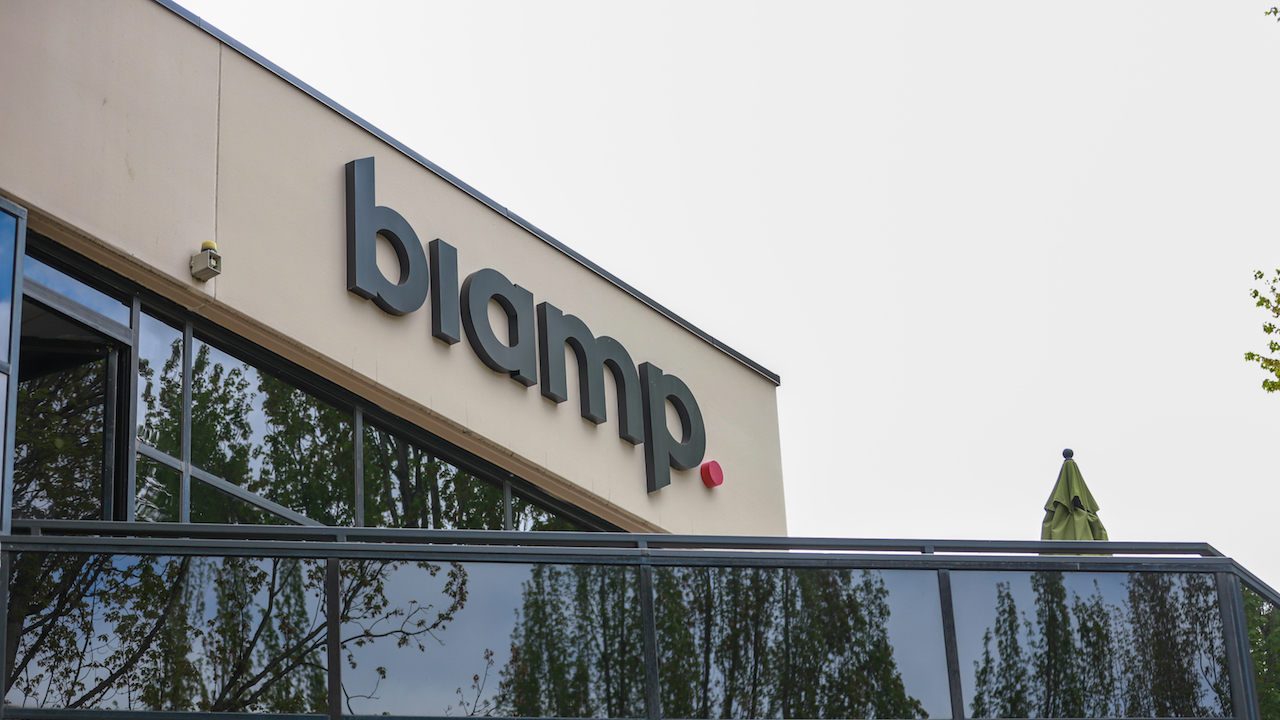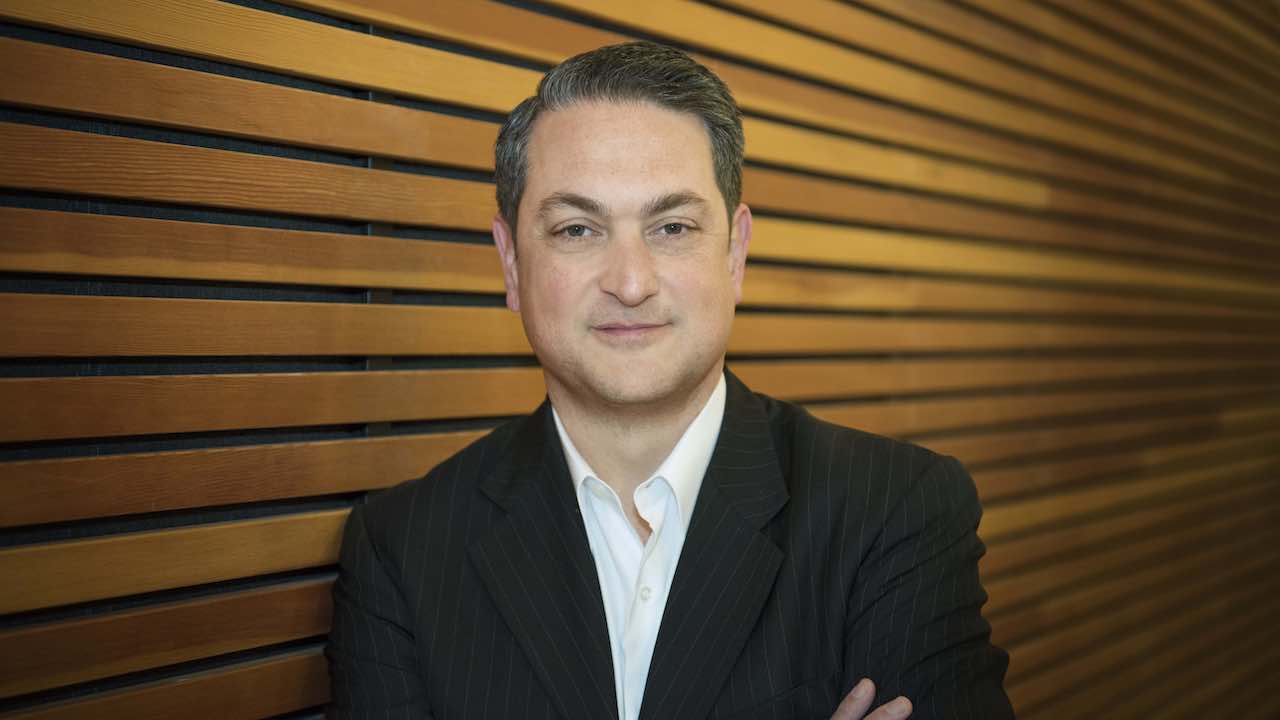At the close of Q1, 2020, the Biamp team celebrated the best quarter, and the best March on record in its nearly 45-year history. “And that was after finishing at record rates last year,” said Rashid Skaf, Biamp’s president, CEO, and co-chairman. “We’ve had a record this year, which we continue to see.”
At of the time of this interview in early December, Skaf was forecasting that 2020 would finish on a growth path over 2019. Given the pandemic that in March sent workers around the world to work from home, and halted manufacturing for many, that growth could only be achieved with tactical planning.
Skaf successfully charted companies through the global financial crises of 2001 and 2008; though the novel coronavirus pandemic has brought a different set of challenges, his experience is guiding decisions to help Biamp emerge healthy. In March, looking into the horizon, he said, “This was going to get tough, and we had better start planning for it. We implemented a process to make sure that we could manage through the short-term—the deep dip—and then the recovery, as it came, in whatever time frame that would happen.”
The Biamp management team set out three tenets: “Protecting our employees, protecting the company, and making sure that we set ourselves up for growth once the market comes back,” Skaf said.
People
With offices, manufacturing, and distribution plants around the world, Biamp employs more than 600 people with nearly 70 percent located in the U.S. “We have terminated zero people worldwide as a result of the pandemic,” Skaf said. “I’m really proud of our people. Everybody has banded together to make sure that we protect each other and keep safe. I am so incredibly proud of the team for what they’ve come through and managed through to make sure that we’re healthy—as employees, which is our number-one priority, but also as a company, so that the financial health and wellbeing of the company was there for everybody as they returned.”
During this challenging time, Skaf feels communication with the employees is more important than ever. “We typically do a quarterly all-hands review where I talk to the employees,” he said. “We’ve gone to a monthly process to give everybody a feeling of how we’re doing as a company and so on.”
The December all-hands review had some questions that are top of mind for employees at many companies. “Can I continue to work from home once this is over?” His answer was to the point: “No.”
Currently, the Biamp offices are at stage one. “For us, that means we prefer you to work at home if you can, and if you can’t, you need to get special permission from your manager to come back into the office,” Skaf said. It’s expected that stage one will continue through at least the first quarter of next year.
Skaf considers himself a social by nature. “I think people are social creatures. Most of the people that thought they wanted to work from home, I don’t think want to work from home anymore after they’ve been home with their kids and dogs and whatever else goes on during the day,” he said. “Task interruptions is something that has been studied for decades. The general science is that when something happens, it takes you 15 minutes or so to get back on track.”
With a global workforce, Biamp has always relied on audio and videoconferencing to meet and collaborate. “There’s never been a meeting where everybody that we need is in one place,” Skaf said. “But I find it important enough to be in person as much as possible, and I’m a big believer in a hybrid version of working, where you have office space, but you also communicate via video or audio.”
Company
Biamp will head into 2021 with a conservative approach to the beginning of the year, with a plan for big uptick in the back half. “Our corporate education and government conferencing business is skyrocketing and doing incredibly well,” Skaf said.
Like any company with products and services for restaurants, bars, hotels, stadiums, and arenas—"the places where people don’t go”—Skaf said they are seeing some difficulty. Once the pandemic is over, he is realistic about the markets that rely on buildings being full. “Their first thought is not going to be, ‘Oh, let me figure out how to get a better audio system.’ Instead, it will be, ‘How do I get more guests—butts in seats—buying food?’” He expects the trend continuing through the middle of 2021.

Not surprising, Biamp did not launch as many new products as it had planned in 2020—in particular, products that would have been slated for venues where people gather. Products that helped companies connect via conferencing were a different story. “They’re buying the stuff that they know and love, and are used to, and in some cases we are converting them over because they know and love us as a company, and they’re buying into the brand.”
Biamp will ramp up with product introductions in January 2021. “Next year will be a big year for product production for us,” he said.
When Skaf led the purchase of Biamp three years ago, he stated that one of the ways the company would grow was through acquisitions. The acquisition of Huddle Room Technology (HRT) company in February would be the only one in 2020. “Buying companies is the easiest thing you can do,” he said. “You write a check, and sign the documents.” The biggest reason this was put on hold is the human factor. “We will continue to acquire companies, but my big focus has always been on integrating the people,” he said. “You’ve got to integrate them all together; you’ve got to get the people to feel like all part of one family.” Skaf said the company will start back on the acquisition track in 2021, when he feels comfortable that he and other management team members can fly to different locations for in-person meetings.
Future
The pandemic hasn’t changed Biamp’s strategy. “When we bought the company, we had a strategy in place of what we wanted to be able to achieve,” Skaf said. “The tactics may have changed from time to time, but the strategy still holds, which is to fit our mission statement—our vision statement—of upgrading things and connecting people through these extraordinary audiovisual experiences.”
That broad statement is as true today as ever. While working from home, people have come to realize that poor audio is tiring. “Having this extraordinary audio experience has become key, and what we’ve built as a company—not just over these three years, but over the 45 years that we’ve been in business—are these flexible systems that find and adapt to the people, rather than having the people having to adapt to them,” Skaf said. “It has never been a better time to be with Biamp.”

